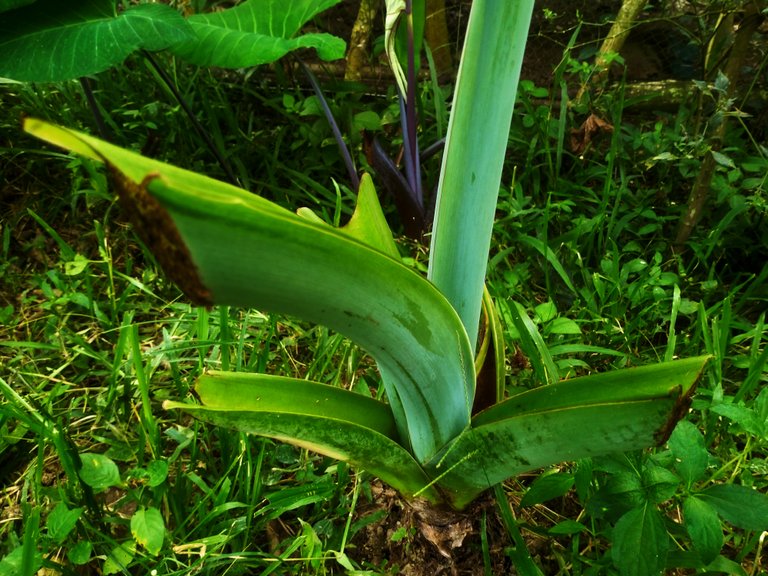It's time to garden & get lucky (Planted taro, caladium)
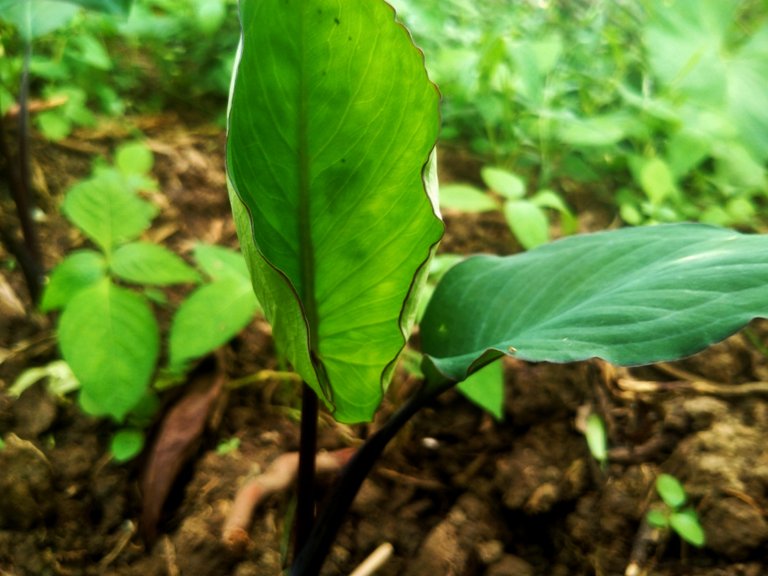
I feel like I have a very lucky life because I live in an agricultural environment, which means I have many opportunities to grow various types of plants that are beneficial for the lives of me, my family and everyone. I have chosen to dedicate my life to agriculture for more than five years and of course I I have enjoyed the results of the various types of plants that I cultivate.
Previously I have shared with you everything about several types of plants that I cultivate in my garden, but I have never shared with you about the plants that I will share with you today, and I apologize for that because I did not share it before, and I also thank the universe for having the opportunity to share it with you today.
Do you know this plant?
I am sure some of you are very familiar with the types of plants that I am sharing today, especially for those of you who like tubers, but you also need to understand that you have to be careful with this plant because this plant has various different types and some of them are Some of them contain poison in them which will disrupt your health and even cause death, so if you find similar plants in the city or anywhere then you need to ask an expert who is very familiar with this plant.
Caladiums are a group of plants from the genus Caladium, the taro tribe (Araceae). In everyday language, taro is often also used to refer to several other plants that are related but do not include Caladium, such as taro (Colocasia). True caladiums rarely form enlarged tubers. This plant originates from the forests of Brazil but is now spread to various corners of the world. Wikipedia
we cultivate this plant to get its fruit, and the fruit of this plant is in the ground (tubers), and we process it for snacks such as chips, fried and also boiled, but the most enjoyed in our city are chips, and now let's go over some of the great plants I've cultivated over varying lengths of time.
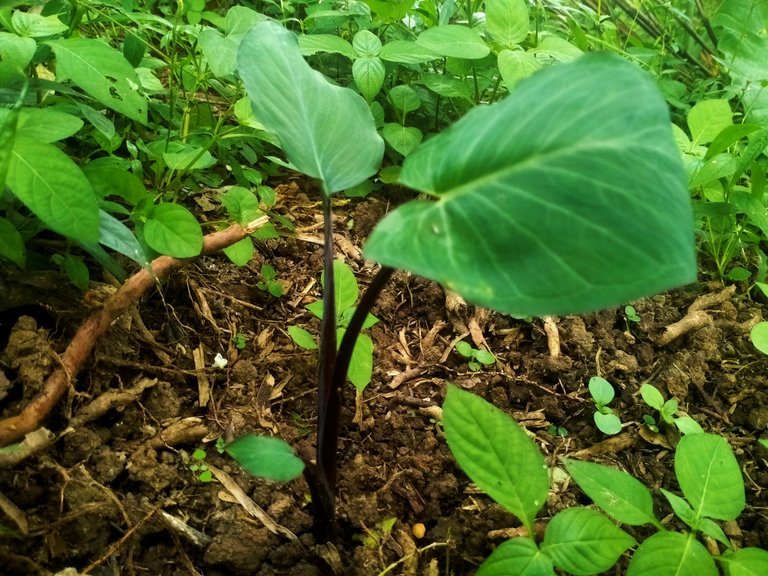
This is a taro plant that I planted 15 days ago, and now it is growing well as you can see in the picture.

utilize weeds to make loose soil around cultivated plants.

When viewed from above, the plant looks fresh but there are no signs of new shoots.
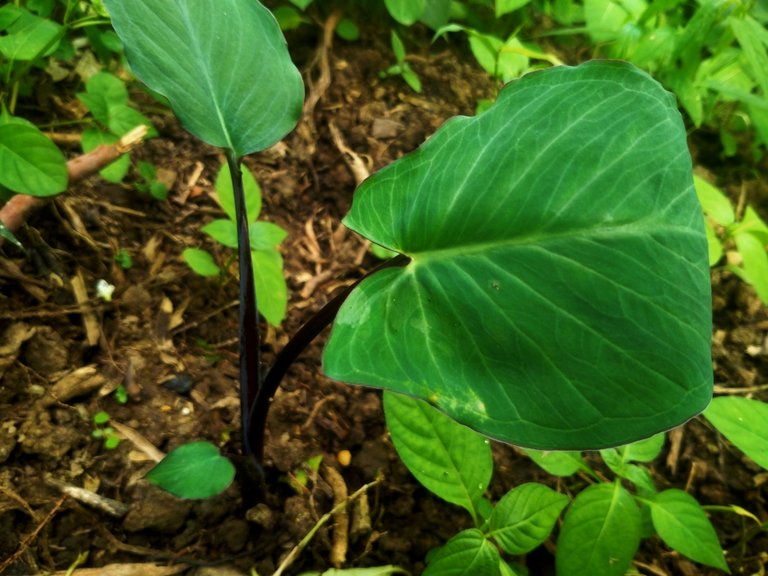

Apart from using weeds to loosen the soil, I also have to apply chemical fertilizer in the next 3 days to make the growth process faster.
and here are the taro plants are 3.5 months old, and everything looks fertile, but I still let the weeds grow underneath so that the soil remains moist, and this will help my taro plants survive the next dry season.
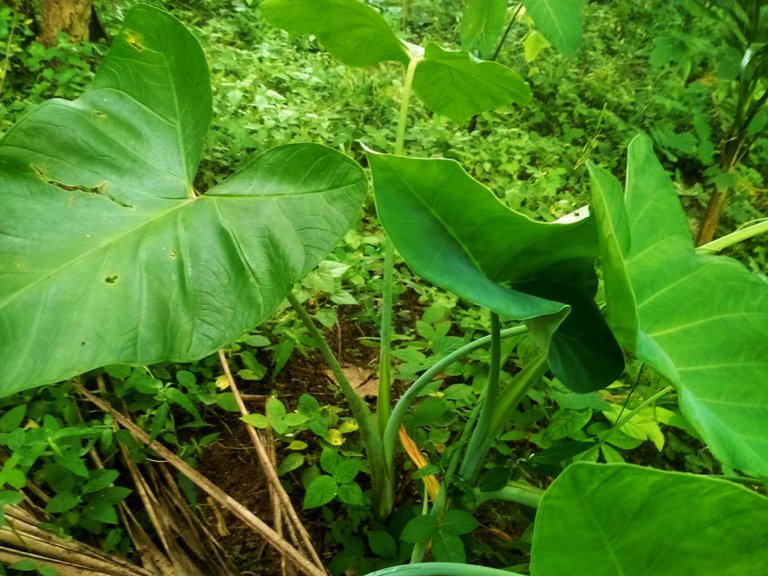
taro that is 3.5 months from planting

taro that is 3.5 months from planting.
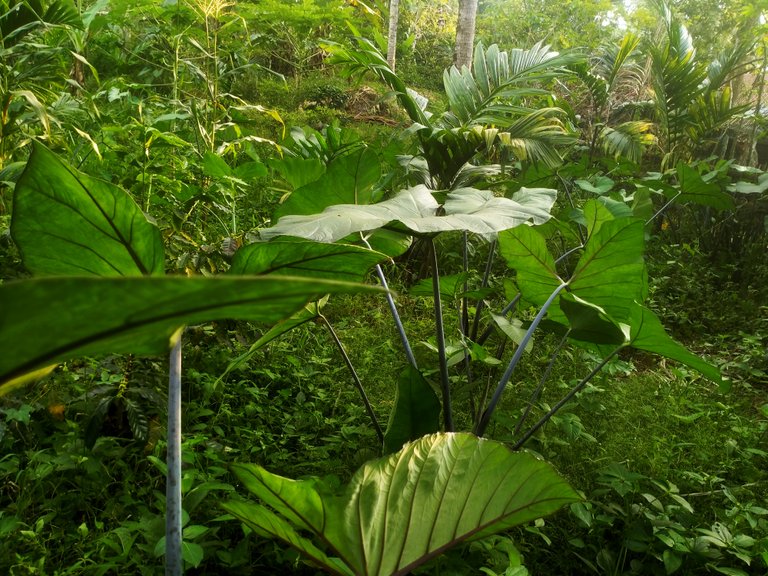
taro that is 3.5 months from planting.
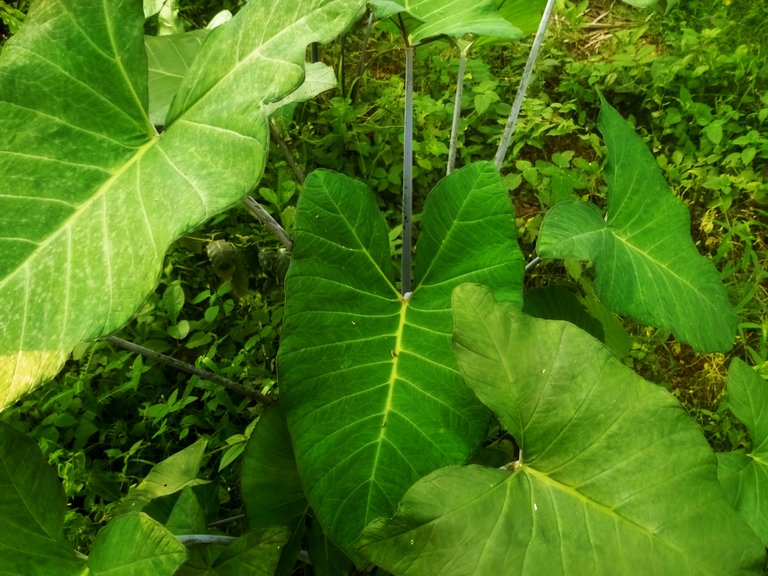
taro that is 3.5 months from planting.

taro that is 3.5 months from planting.

taro that is 3.5 months from planting.
as I told you earlier at the beginning of the post that I have taro with varying growing times, and it could be said that I am trying to develop this plant in my city to meet the needs of me, my family and everyone, so this plant can be used as a as a substitute food for residents and it contains a lot of nutrients, so apart from rice, our people can consume the fruit (tubers) of this plant as their staple food.
and the following taro already has a planting age of 6 months, I only need to wait 1-2 months to harvest, and of course I will share with you when I harvest later.
Thank you very much for visiting my blog, I hope this post can give you motivation and insight about plants that can be consumed and also have economic value, see you in the next post 🥳🥳
